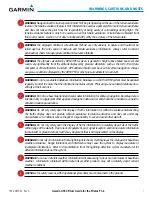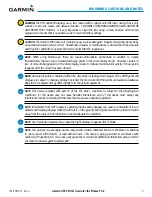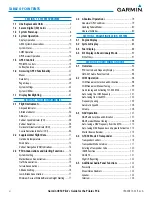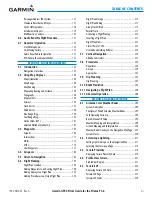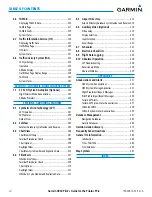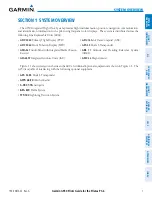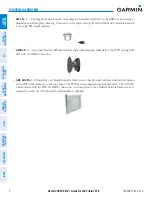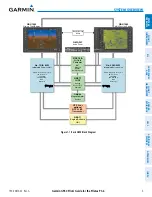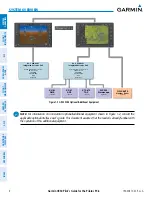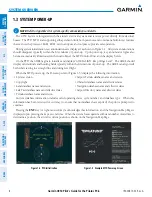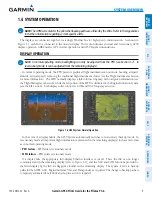
Garmin G950 Pilot’s Guide for the Pilatus PC-6
190-00870-02 Rev. A
ii
WARNINGS, CAUTIONS, AND NOTES
WARNING:
The Garmin system, as installed in this aircraft, has a very high degree of functional integrity.
However, the pilot must recognize that providing monitoring and/or self-test capability for all conceivable
system failures is not practical.
WARNING:
The United States government operates the Global Positioning System and is solely responsible
for its accuracy and maintenance. The GPS system is subject to changes which could affect the accuracy
and performance of all GPS equipment. Portions of the Garmin G950 utilize GPS as a precision electronic
NAVigation AID (NAVAID). Therefore, as with all NAVAIDs, information presented by the G950 can be
misused or misinterpreted and, therefore, become unsafe.
WARNING:
To reduce the risk of unsafe operation, carefully review and understand all aspects of the G950
Pilot’s Guide documentation and the G950 Integrated Avionics System in the Airplane Flight Manual.
Thoroughly practice basic operation prior to actual use. During flight operations, carefully compare indications
from the G950 to all available navigation sources, including the information from other NAVAIDs, visual
sightings, charts, etc. For safety purposes, always resolve any discrepancies before continuing navigation.
WARNING:
Do not use the system to attempt to penetrate a thunderstorm. The illustrations in this guide are
only examples. Both the FAA Advisory Circular, Subject: Thunderstorms, and the Aeronautical Information
Manual (AIM) recommend avoiding any thunderstorm identified as severe of giving intense radar echo by
at least 20 miles.
WARNING
:
Lamp(s) inside this product may contain mercury (HG) and must be recycled or disposed of
according to local, state, or federal laws. For more information, refer to our website at www.garmin.com/
aboutGarmin/environment/disposal.jsp.
WARNING
:
Because of variation in the earth’s magnetic field, operating the system within the following
areas could result in loss of reliable attitude and heading indications. North of 72° North latitude at all
longitudes; South of 70° South latitude at all longitudes; North of 65° North latitude between longitude
75° W and 120° W. (Northern Canada); North of 70° North latitude between longitude 70° W and 128° W.
(Northern Canada); North of 70° North latitude between longitude 85° E and 114° E. (Northern Russia);
South of 55° South latitude between longitude 120° E and 165° E. (Region south of Australia and New
Zealand)
WARNING
:
Do not use GPS to navigate to any active waypoint identified as a ‘NON WGS84 WPT’ by a
system message. ‘NON WGS84 WPT’ waypoints are derived from an unknown map reference datum that
may be incompatible with the map reference datum used by GPS (known as WGS84) and may be positioned
in error as displayed.





